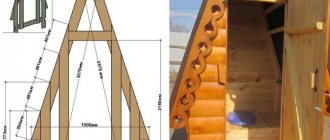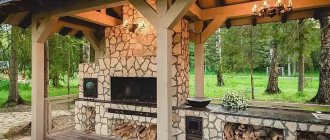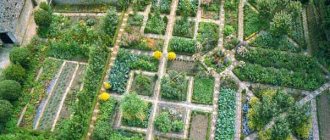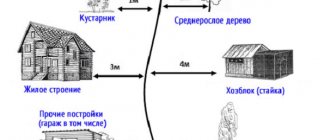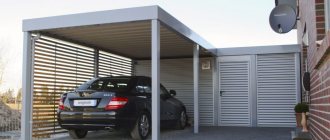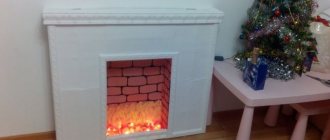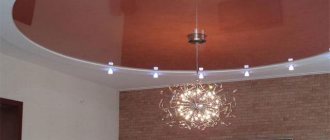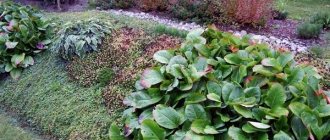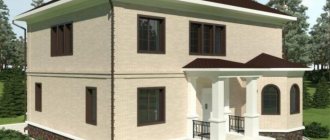What is it and why is it needed?
The word “pergola” itself is of Latin origin: per-regere - translated as “to guide”.
From Italian the word pergola is translated as an extension. The original purpose of a pergola in a garden is to support climbing plants. A pergola on a path or near a building also serves as a protective canopy from the scorching sun. The pergola looks different from standard gazebos or canopies; the difference is noticeable primarily in the upper part of the structure. The pergola roof at the dacha is not solid, but mesh.
Thanks to its aesthetic appearance and the use of plants, the building is part of the landscape. To make it pleasing with its appearance for a whole season, long-flowering climbing plants are grown along it - for example, clematis, kobei.
The photo shows a white pergola at the dacha
Pergola in landscape design performs several functions:
- support for loaches;
- creating shade in the recreation area;
- zoning;
- decoration of terraces and entrance groups;
- masking unnecessary objects;
- placement of accents.
In the photo there is a lounge area on the street
Variety of pergolas
The location of the covered lattice structures is a summer cottage, a cottage or an ordinary country house. The structure is not able to replace the arch for climbing plants that many are accustomed to, but a grape gazebo decorated with refined tastes can become a “highlight” on a private territory.
The historical origin of the word pergola is interpreted as a simple canopy or an extension located near the main house. There are several typical types of such canopies:
- A fixed canopy made entirely of wood.
- A structure resembling a tunnel.
- The pergola is similar in design to a regular fence.
- Gazebos-canopies.
Wooden pergolas
Pergolas with canopy are made from wooden materials. The sealed top roof makes the structure look like a regular awning gazebo, but the lattice cavities provide only partial shade, not complete shade.
A bench for sitting fits well inside a wooden canopy. Thanks to the ability to cover a large area, the canopy can provide shade for a small playground.
Considering the design features, the structure resembles an ordinary veranda of a translucent type, provided it is adjacent to any wall of the main dwelling.
Tunnel gazebos
The design image of a tunnel pergola is very simple - the structure is mainly erected for arranging a garden path.
It is very simple to assemble this type of decorative decoration of the site with your own hands; you can ensure reliable fastening of the racks and fill the cross boards. This variety fits perfectly into the landscape if it is entwined with a vine or other climbing plants.
Fence structures
Sometimes, to arrange a small area of their own plot, lovers of country life prefer to install gazebos, the walls of which resemble a fence.
The function of such a structure is aimed primarily at creating a full-fledged closed space for privacy. A pergola of this type can become an additional barrier for unsightly places: a cesspool with waste, an unsightly external toilet.
Often such buildings are erected near the garage in order to completely separate the automobile zone from the territory of the rest of the yard.
Relaxation area - canopy
Canopy pergolas are not widespread in our territory, however, they are a characteristic structure of the southern regions.
With prolonged exposure to the sun, the need for artificial darkening arises. The canopy design perfectly captures most of the sun's heat and also helps create a ventilated shadow area.
When placing the air conditioner outdoors, its energy consumption will be significantly reduced thanks to a simple wooden canopy.
What types of structures are there?
Depending on the comparison parameters, different types of buildings are distinguished.
Accommodation:
- Freestanding. Can be located in any convenient place - to decorate gates, paths, recreation areas in the center of the garden. It stands on supports and does not depend on other buildings.
- Extension to the house. More often it is a pergola over a terrace, which on one side rests on the wall and on the other on its pillars.
The photo shows a landscape design with a canopy
Model:
- Tent. Usually it does not have supports from below, it hangs over the windows, protecting them from sunlight.
- Canopy. It also seems to “come out” of the wall of the house, usually longer and narrower than the awning. Cars are parked under it, barbecue areas, playgrounds, and patios are installed.
- Alcove. Independent construction away from home. Unlike a regular gazebo, it does not protect from rain due to the lattice roof.
- Screen. A vertical pergola that looks more like a fence. Flowers are also woven along the mesh from bottom to top. Acts as a zoning element.
- Tunnel. Several arches connected by one roof are placed over a path or at the entrance to form shade and create a beautiful shaded corridor in the landscape design.
- Rest zone. The design already includes benches and a roof; add a barbecue and a table and you’ll get a ready-made space for a barbecue.
Style:
- Country. A widespread, familiar option: a wooden model, characterized by a laconic design and straight lines. Usually not painted, used in the shade of natural wood, goes well with greenery in the garden.
- High tech. A pergola in a modern style looks completely unconventional, being an art object in the local area. The lines can be either smooth, curved, or straight (characteristic of Art Nouveau). Wood, metal, and plastic are used in production.
In the photo, stone decoration on a summer cottage
- Oriental. They are made mainly from wood, tinted red. It differs from the traditional model in the type of roof: carved smooth transitions make the pergola look like a Chinese pagoda.
- Mediterranean. Structurally, it is no different from country, except for the color: the main one should be white, complement it with black or wenge, or dark warm wood.
In the photo there are benches under the roof of the house
Form:
- Simple square. A classic option for a garden plot, distinguished by its regular shape.
- Simple round. Smooth lines look more harmonious on a summer cottage. More suitable for small areas or matching styles.
- Complex. Triangular, multifaceted, broken, curved - if you need to make an accent, rely on an irregular shape.
What plants can be used for a pergola?
If you want to cover the pergola with ornamental plants, make sure that the structure is sufficiently strong and stable.
To decorate the area on pergolas you can grow:
- Climbing roses. The most difficult thing to grow on a pergola, but also the most beautiful and fragrant plant. Climbing roses must be watered, fertilized, pruned and carefully covered for the winter.
- Grape. Both wild and cultivated species can be used. The most popular and easy-to-care decorative look is girlish. There are also fruit-bearing varieties for the middle zone, for example, “Moscow Muscat”. Such grapes also need to be covered for the winter.
- Honeysuckle. A beautiful fragrant vine with decorative leaves and pink-yellow or pink-red flowers.
- Clematis. Beautiful multi-colored flowers. Clematis roots need shade.
- Schisandra. In addition to the decorative effect, the leaves of this plant also have an invigorating effect and are used to make drinks. The berries of the plant are also edible.
- Hop. Loves acidic soils, produces a harvest of cones when planted side by side with female and male plants.
- Ivy. A classic plant used around the world to weave around pergolas, gazebos and even house facades. Unfortunately, in the middle zone in shady places, ivy can freeze in winter.
If you are just looking for ideas for renovation and arrangement or already know for sure that a pergola is your option, we have collected for you 36,912 photos from real projects of interior designers, decorators and architects from Russia and around the world, including such proven professionals as BLOCKSTUDIO and Randy Angell Designs. The beautiful pergolas in our photographs are the best examples of competent design and layout in different styles and colors. If you like any design option, for example the pergola from the second photo, you can contact the author and order the ideal design project for yourself. See our photo gallery, look for inspiration and professionals, and you will see why Houzz is the best resource for apartment and home interior design, renovation, home construction, architecture and landscape design.
What materials are pergolas made from?
Pergolas should, firstly, not argue with nature, and secondly, correspond to the chosen style of interior and exterior. There are 5 main types of arches:
- Wooden. The wood is cheap, easy to process and install, looks natural, and fits into any style. The disadvantages include relative fragility, susceptibility to fungal infection, rotting, and damage by pests. But in general, if you approach the issue of protecting the tree with all responsibility, the pergola will live for more than 10 years.
In the photo there is a sitting area with pillows
- Metal. The design is based on a tube with a round or square cross-section. The final result depends on the skill of the manufacturer: a well-made structure will be almost eternal. The aesthetics of such a pergola is the simplicity of its lines; it will fit perfectly into the modern exterior of a country house in the high-tech or modern style.
In the photo there is a patio near the house
- Forged. Also metal, but completely different: airy, curved, smooth. The forging is simple - imitating a mesh and geometric elements. And complex - with elegant plant details, fashionable monograms, original baskets, ligature, and unusual ornaments. Typically made in an arch shape, suitable for traditional designs.
- Plastic. It is characterized by its low cost, variety of designs, and availability. Among the disadvantages are the absolute non-ecological nature (which argues with the very idea of landscape design), and often unattractive appearance. But if you need a temporary or inexpensive option, plastic is great. The plastic will not be visible under the thick greenery, but will cope with the main task (support, protection from the sun).
- Stone. Canopies made of one stone are rare - they are expensive, too massive, difficult to manufacture, and can break under their own weight. Most often, columns are made of stone or brick, and crossbars or the roof are made of wood or metal.
In addition to the above options, there are combined:
- Wood + stone. The roof made of wooden beams and beams on stone supports looks great.
- Wood + metal. More often, the frame is made from metal pipes, supplemented with a wooden mesh.
- Metal + stone. A heavy metal roof is placed on a strong stone base. Long lasting option.
Selection of material for construction
Various combinations of materials are used to create attractive decorative designs. Among the main trendsetters in pergola fashion trends are:
- Ordinary wood, as well as elite expensive species.
- Quite attractive designs are obtained from metal elements.
- Pergolas for luxury connoisseurs' gazebos are made of stone.
- Some high-tech adherents like technological materials - plastic or metal-plastic panels.
- Combined projects are becoming common, where each element is given a specific place in the overall decor.
Natural features, natural flexibility and relative cheapness make wooden structures the most common pergola model.
With a comprehensive protective coating, wooden elements acquire sufficient durability. Together with other types of decorative materials, they fit into any unique gazebo style.
Drawings with dimensions
For independent construction, I suggest you study several drawings and designs of country pergolas.
The simplest option is presented in the very first photo, where six 2.5-meter bars are used to create pillars and 9 horizontal rafters to create a roof. An elementary, economical and very effective option for a summer residence.
The full drawing and assembly diagram are presented more for clarity of connections, although in some places they use extremely “cloudy” construction methods.
The first option seemed to me the most appropriate, so that’s what I recommend to you.
The pergola comes from the Mediterranean, where even in ancient Rome it was used for purely utilitarian purposes - to support and strengthen the grape vine, which made harvesting easier. Over time, thanks to their simplicity of execution, practicality and aesthetics, pergolas have become a bright and effective element of landscape design.
A pergola will add beauty and comfort to your home
Where is the best location?
There are two ways to choose the ideal place for a pergola in landscape design: based on the location or the type of structure. In the first case, the type, size and other parameters are dictated by the space itself: for example, you need to zone the space, provide shade in a certain area, tie up plants. In the second, you choose a pergola and look for a place in the garden where to place it.
Options may vary:
- Pergola for flowers or grapes. If the plants are already planted, place the structure next to them and let the vines fall onto the mesh. Over time, the vines will take up space and give a decorative appearance.
- Pergola with swing. Here you will relax in the shade, so the view before your eyes comes to the fore - the landscape should please you. Ideally placed overlooking a flower garden or other beautiful area.
- Pergola by the pool. You don't want to completely shade the area around the water, but a corner in the shade is necessary. Throw lush greenery around the canopy, place a couple of sunbeds with a table and other furniture separately below. After swimming, you will be pleased to sit in the shade with a book and a refreshing cocktail.
- Pergolas near the house. The installed canopy takes almost no part in landscape design, but it perfectly shades the windows and creates space for relaxing on the street near the building.
What color is better to decorate?
The choice of color is a purely individual matter. To create an accent, choose contrasting shades: white, red, yellow, blue.
A light or dark shade of natural wood will help complement the natural atmosphere. You can disguise the structure using green and brown colors.
The photo shows the shading of the site near the house
How can you decorate?
Decorating a pergola is mainly done with plants. Main options:
- grape;
- hop;
- climbing rose;
- bougainvillea;
- morning glory;
- clematis;
- dichondra;
- kamsis;
- wisteria;
- ivy;
- kobeya;
- sweet pea;
- actinidia.
In the photo there is an area with a barbecue and garlands
In addition to plants, fabrics are used: flying organza or chiffon looks amazing in the yard, fluttering through the air from the wind. White fabric with wood looks amazing and creates the atmosphere of a gazebo on the seashore.
Swings, hammocks, hanging chairs are installed under the roof - they look decorative and are a favorite place for families to relax. Loungers with bright pillows or covers also serve as a kind of decor.
Depending on the style, decorate the pergola with other functional elements: red lanterns in an oriental style, rain garlands in a modern one.
In the photo there are curtains in the gazebo on the street

